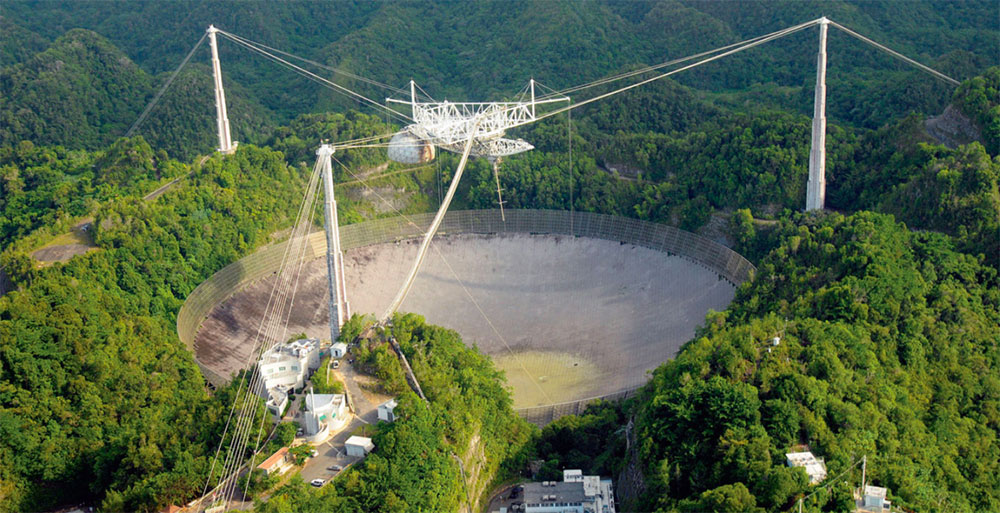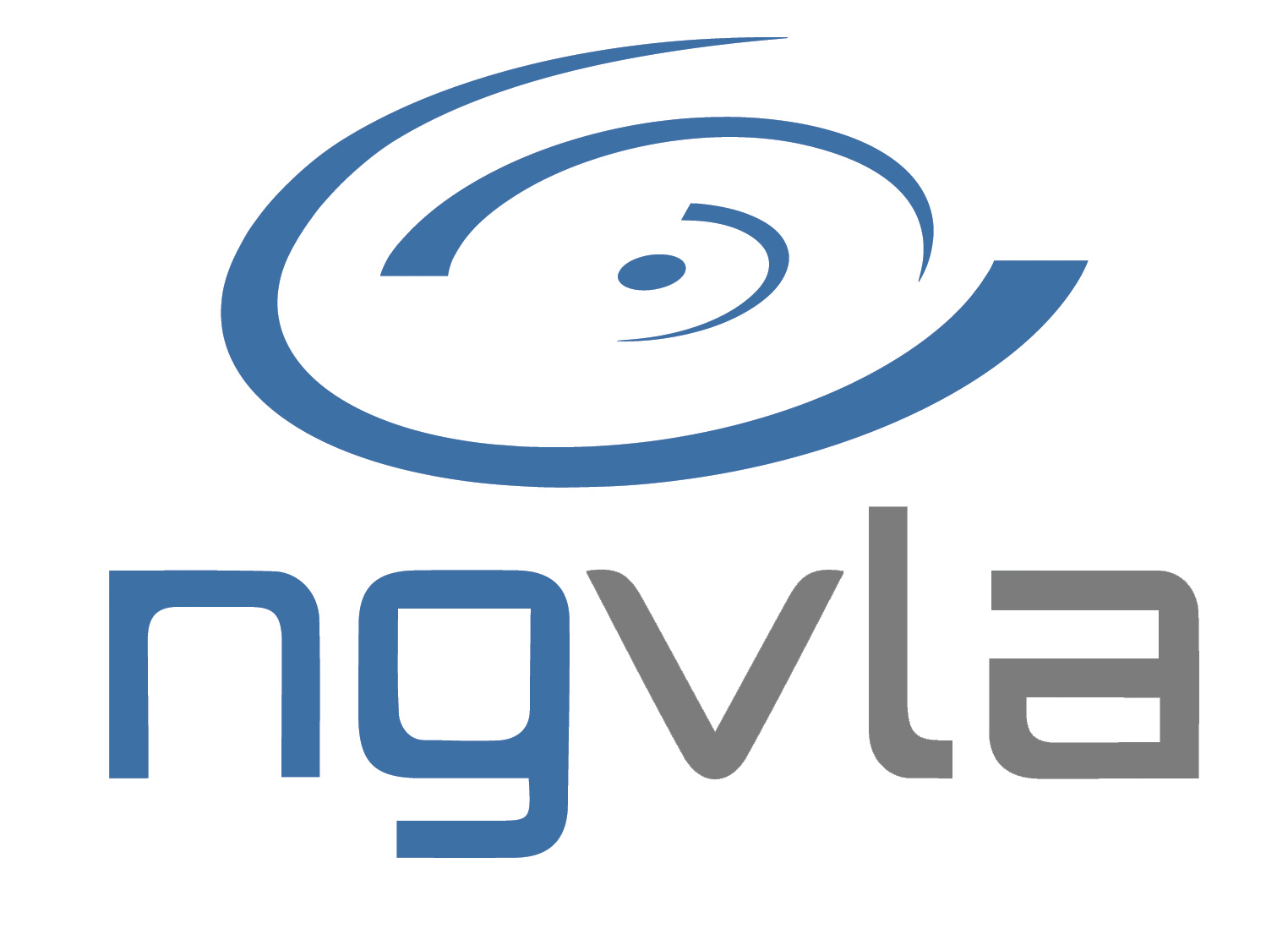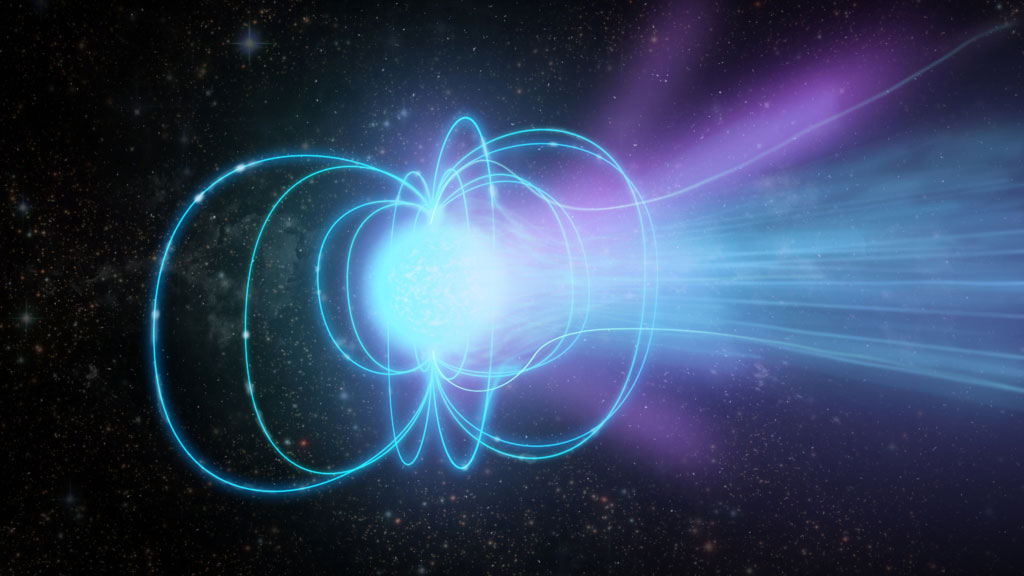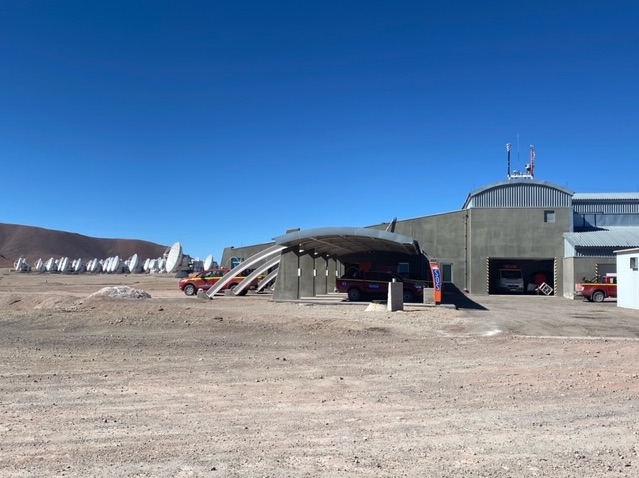NRAO eNews
Volume Vol#, Issue Iss#
Day# Month# Year#
NRAO eNews
Volume Vol#, Issue Iss# • Day# Month# Year#

Upcoming Events

NRAO Community Day
Jan 8, 2021 | Virtual
NRAO at the Virtual AAS | All times are EST.


8th VLA Data Reduction Workshop
Mar 15 - Apr 1, 2021 | Virtual
The Arecibo Observatory

University of Central Florida
The 305-meter Radio Telescope of the Arecibo Observatory in Puerto Rico.
[click to enlarge]
The Arecibo Observatory has had a prominent role within modern astronomy, both scientifically and from a human capital perspective, and its loss will be keenly felt.
With its unparalleled sensitivity for more than 50 years, it provided unique insights into the structure of the Milky Way Galaxy, star forming regions, and evolved stars by observing a variety of atomic and molecular lines, most notably observations of the 21 cm line of neutral hydrogen.
Discoveries with the Arecibo Observatory helped lay the foundation for the emerging era of multi-messenger astronomy, highlighted by the discovery that the orbits of a pair of neutron stars were decaying, as expected if the binary system was emitting gravitational waves as predicted by the Theory of General Relativity. Precise timing of radio pulsars provided equally novel advances in areas such as the equation of state of nuclear matter and advances toward the direct detection of nanohertz gravitational waves.
Both observations with and transmissions from the Arecibo Observatory injected new elements into the search for life in the Universe, primarily in the area of searching for signatures of other technologies, and, for half a century, Arecibo stood as the defining marker for interstellar transmissions.
Within the Solar System, the Arecibo Planetary Radar (often affectionately known as “El Radar”) helped change our view of the planets Mercury and Venus, crucially providing the first views of the surface of Venus. More recently, the Arecibo Planetary Radar obtained crucial information about near-Earth asteroids, leading not only to scientific discoveries but precise orbit determinations for the purposes of planetary defense.
These scientific discoveries only happened, though, because of the immense amount of talent that was cultivated at the Arecibo Observatory. Numerous scientists and engineers, from the island of Puerto Rico and internationally, developed their skills at the Arecibo Observatory, leading to further discoveries through the field of astronomy.
While everyone in the astronomy community is saddened by its loss, there is no doubt that data acquired by the Arecibo Observatory will continue to be critical to new discoveries for many years to come. The National Science Foundation is also exploring new scientific roles and opportunities for the observatory.
Semester 2021A Telescope Time Allocation

The NRAO has completed the Semester 2021A proposal review and time allocation process for the Very Large Array (VLA) and the Very Long Baseline Array (VLBA).
For the VLA the D and C-configurations will be available in the 21A semester and 194 new proposals were received by the 3 August 2020 submission deadline, including three large and nineteen time critical (triggered) proposals. The oversubscription rate (by proposal number) was 2.5, and the proposal pressure (hours requested over hours available) was 2.0, both of which are similar to recent semesters.
For the VLBA, 41 new proposals were submitted. The oversubscription rate was 2.7 and the proposal pressure was 3.6, both of which are slightly higher than recent semesters.
There was significant demand for the time made available on space observatories through inter-observatory agreements, and sixteen proposals requesting time on the Hubble Space Telescope, Swift, or Chandra (together with AUI/NRAO telescope time) were submitted.
Proposals submitted to the GBO were assessed through the same process. Seventy-four proposals for the GBT were received for the 21A Semester. The oversubscription rate was 2.4, and the proposal pressure was 1.9. For information on proposals for GBT observations see the GBO website.
The proposals were reviewed for scientific merit by nine Science Review Panels (SRPs) and for technical feasibility by NRAO staff. These reviews were completed in August – September 2020 and then considered by the Time Allocation Committee (TAC) during a remote meeting on 19-20 October 2020. The TAC – comprising the 9 SRP chairs – was charged with recommending a science program for Semester 2021A to the Observatory Director. The recommended program was reviewed and approved on 4 November 2020.
A disposition letter was sent to the Principal Investigator and Co-Investigators of each proposal on 9 November 2020 and a TAC report containing information for proposers and observers, including statistics and telescope pressure plots, was released the same day. The approved science program for the VLA and the VLBA has been posted to the NRAO science website. The authors, title, abstract, and scheduled hours for each approved proposal can be accessed from the Proposal Finder Tool.
The Student Observing Support program continues to be available for NRAO observing programs and we encourage Principal Investigators of highly ranked VLA and VLBA proposals to consider applying for support.
The NRAO welcomes community feedback on the proposal review and time allocation process. Please provide such feedback via the Proposal Review department of the NRAO Helpdesk.
The New NRAO Science Helpdesk
On 2 December, the user interface for the NRAO Science Helpdesk was updated. All tickets and knowledgebase articles were imported into the new helpdesk user interface. You may login to the new helpdesk with your default email as the username and your my.nrao.edu password. Please note, do not reply via email to a ticket created before 2 December, because it will not be posted to the ticket nor be received by NRAO. New tickets created on or after 2 December can be replied to via email.
8th VLA Data Reduction Workshop: 2nd Announcement

The NRAO is pleased to announce the 8th VLA Data Reduction Workshop, which will be held virtually 15 March–1 April 2021. Please visit the Workshop website to register and for more information. There is no registration fee to attend the Workshop. However, the event will be limited to 30 participants, so please register early to reserve your spot.
The main goal of this Workshop is to assist observers with the challenges of Very Large Array (VLA) data reduction posed by the increased flexibility and complexity of the instrument. We will provide lectures on key topics and allow participants to reduce and image their own data while local expert staff members are available online for consultation.
This is an advanced Workshop and, unlike our summer Synthesis Imaging Workshops, is not intended for those who are new to radio interferometry. Prior experience with AIPS, CASA, or MIRIAD is required. As we will be using CASA for data reduction, a working knowledge of it would be helpful. We strongly recommend those new to CASA go through one or more of our tutorials prior to attending the workshop.
Unlike previous VLA data reduction workshops, this event will span almost three weeks. The first week will include lectures and dedicated time for data reduction and imaging. The optional second and third weeks will be devoted primarily to data reduction and imaging of each participant's data.
ngVLA Project News

ngVLA Community Studies Program CfP
We remind the community of the open call for proposals for the ngVLA Community Studies Program, a funding opportunity for further developing the most compelling ngVLA science questions. The proposal receipt deadline is 15 January 2021 at 23:59 EST.
We expect to fund most approved studies at a modest level to cover publication charges plus possible travel expenses to present results. We also expect to fund a small number of approved studies at a more significant level (up to $30,000 per award) through the ngVLA Community Studies Grants program. A full description of the ngVLA Community Studies Program and a list of past awards is online.
New Views of Galaxy Formation and Evolution at the winter AAS
The NRAO and the ngVLA Project will convene a virtual Special Session titled New Views of Galaxy Formation and Evolution on Thursday, 14 January 2021, 12:00-13:30 EST, and an iPoster session on Friday, 15 January 2021, 16:10-17:20 EST, at the winter American Astronomical Society (AAS) meeting.
Sensitive ground- and space-based astronomical facilities are pushing the detection of galaxies well into the Epoch of Reionization, less than 1 Gyr after the Big Bang. Such detections are allowing us to begin piecing together a picture for how and when the first galaxies formed, along with the physical processes driving their evolution into the mature systems that we observe in the local Universe. This AAS Special Session will highlight recent scientific breakthroughs enabled by current investigations using large optical/IR, (sub-)millimeter, and radio facilities; describe planned near- and long-term improvements for ground- and space-based facilities; discuss major scientific leaps likely to result from next-generation facilities across the electromagnetic spectrum; and review the highest-priority goals that will be accomplished by the state-of-the-art observatories commissioned in the next decade.
This virtual AAS event will feature a session of invited oral presentations and an associated iPoster session with contributed presentations. Confirmed speakers include: Mark Dickinson (NOIRLab), Linda Tacconi (Max Planck Institute for Extraterrestrial Physics), Justin Spilker (University of Texas), Xiaohui Fan (University of Arizona), Chris Willott (Herzberg Astrophysics), and Rachel Sommerville (Flatiron Institute). The associated iPoster session has drawn 20 contributions.
Fast Radio Bursts with the ngVLA

Sophia Dagnello, NRAO/AUI/NSF
Artist's conception of a magnetar: a superdense neutron star with an extremely strong magnetic field. In this illustration, the magnetar is emitting a burst of radiation.
[click to enlarge]
Transient surveys are transforming our understanding of stellar death, relativistic explosions, and the birth of compact objects. One fascinating new class of object is the Fast Radio Burst (FRB), a millisecond transient with luminosity orders of magnitude larger than that of pulsars, >1040 erg in radio alone (Petroff et al. 2019). The large gap in luminosity between pulsars and FRBs implies that the latter phenomenon traces some exotic process that is rare in the local Universe. Despite that, the inferred all-sky burst rate is ~ 1000 per day and the volumetric rate is higher than that of plausible progenitors associated with optical/high-energy transients (Ravi 2019).
Progress in understanding FRBs and their utility as cosmic probes is limited by the number of sources with multiwavelength counterparts. We used the VLA to associate one FRB source to a highly magnetized, luminous nebula, which supports the association to millisecond magnetars (Chatterjee et al. 2017, Kashiyama & Murase 2017).
However, at least one ordinary Galactic magnetar, SGR 1935+2154, is able to produce FRB-like bursts (Bochenek et al. 2020, CHIME/FRB Collaboration et al. 2020). Magnetar models make strong predictions for associations of FRBs to other classes of transient, such as gamma ray bursts (Margalit et al. 2018). Regardless of their formation process, FRBs are already proving their worth as probes of the intergalactic medium (Macquart et al. 2020) and the distant ones are expected to become valuable new tools for precision cosmology (Zhang 2018).
The ngVLA will be effective at detecting and identifying FRB host galaxies due to its combination of sensitivity and spatial resolution. FRB search observations at frequencies above 2 GHz are rare, so ngVLA discoveries may be associated with new environments or with sources in a younger, more active state. The ngVLA will also be critical in finding and characterizing the nebular emission that is potentially associated with all FRB environments. The ngVLA can enable this science by allowing for commensal data analysis platforms such as "realfast", a commensal FRB search system at the VLA. Commensal analysis and "software telescopes" are concepts that maintain flexibility to new science concepts that helps to future-proof the array hardware. Commensal data analysis also improves science productivity by allowing multiple science applications in a single observation.
Since 2015 the acronym ngVLA has appeared in over 600 publications indexed in the SAO/NASA Astrophysics Data System. This article continues a regular feature intended to highlight some of those publications. We are especially interested in showcasing work done by early-career researchers. Anyone wishing to volunteer to author a feature should contact Joan Wrobel.
ALMA Program News

AOS Operations Stage- Team Members
ALMA personnel are re-establishing systems at the 5000m altitude Array Operations Site (AOS), seen here on 12 December, a calm clear late Spring day.
[click to enlarge]
Science Operations Status
ALMA continues its return to operations. Power, fiber connectivity, and water have been re-established at the 5000m altitude Array Operations Site (AOS). This will be followed by methodical power-up of key AOS Technical Building electronics, and antenna systems, after a thorough checkout. These are major milestones towards the hoped for resumption of the Cycle 7 observing program in March 2021.
The pre-announcement for the previously delayed Cycle 8 Call for ALMA observing proposals is scheduled for 17 December 2020, se the ALMA Science website for details.
On 3 & 4 December, the ALMA Helpdesk was migrated to a new service provider, Deskpro.
HL Tau at Five Years
The virtual conference HL Tau at Five Years was held 7-11 December 2020. Nearly 600 participants had registered at conference start. Talks are available on the conference YouTube channel.
ALMA Science Sustainability
The schedule for the Cycle 9 Call for North American (NA) Development Project Proposals was delayed by six months due to the COVID-19 pandemic.
The date of issue for the Call for Proposals will be 15 January 2021. Project execution can only begin after adjudication at the November 2021 ALMA Board Meeting.
The ALMA Development Projects Implementation Plan will be available for review and describes the fundamental processes for project proposal and review. This call for proposals will be open to the NA ALMA Operations Partnership, which is defined as the community of astronomers and scientists in related fields from NA ALMA partner countries. Projects will be funded for Cycle 9 in an integrated, multi-year award.
Priority will be given to Projects which align with the ALMA Development Roadmap (ALMA Memo 612). Topics of particular interest to the NA ALMA Partnership include larger bandwidths and improved receiver sensitivity, such as would be provided by an upgraded correlator and receivers. Second Generation Correlator proposals must meet the specifications of the Correlator Working Group report, the first draft of which is expected by the proposal call date.
All proposals and resulting instrumentation must comply fully with ALMA standards for system interfaces, interoperability, and documentation. NRAO staff can help applicants develop plans or steer them toward relevant documentation, upon request and with sufficient notice.
If you are planning or even considering proposing in response to this Call, you must file a Notice of Intent before 28 February 2021. In contrast to previous Calls, submission of a Notice of Intent is mandatory.
Additional details will be released with the Call in January 2021. The deadline for receiving the proposals will be 9 April 2021.
ALMA Board News
At its November 2020 virtual meeting, the ALMA Board unanimously agreed with the appointment of the following nominees to the ALMA Science Advisory Committee (ASAC) for North America:
- Stephen White, for one year, until 31 December 2021.
- Alexandra Pope, for three years, until 31 December 2023.
- Erik Rosolowsky, for three years, until 31 December 2023.
- Meredith Hughes, for three years, until 31 December 2023.
All of the above terms shall start on 1 January 2021. Please see the ASAC Members List for a current membership listing.
Recent Media Releases
|
NRAO and GBO Saddened at Loss of Arecibo Telescope |
From the Archives
Ellen Bouton

[click to enlarge]
About this month's photo: Holiday celebrations have been enjoyed at NRAO for many years (and we know they will be again). In this December 2007 photo, the "Pipe Choir" performs at a Charlottesville business office lunch. Bill Porter says, "I had found a Christmas craft project that told how to make chimes by cutting galvanized pipe to different lengths, and gave 'music' sheets to play Christmas tunes by banging the pipes. Ted [Miller] took the 8 ft length of pipe home and cut it into the lengths and we took volunteers to be the 'NRAO Pipe Choir.' The photos, obviously, are of the musicians practicing under a very stern conductor." Standing left to right: Stern conductor Bill Porter, Pat Donahue, Amy Shepherd, Ted Miller, Anthony Turner, George Clark, Tim Starr, and Bob D'Angio. Seated: Richard Bishop and Richard Sakshaug. Thanks to Bill Porter for caption info and to Bill, Tavia Dillon, and Richard Sakshaug for identifications.
From the Archives is an ongoing series illustrating NRAO and U.S. radio astronomy history via images selected from our collections of individuals' and institutional papers. If readers have images they believe would be of interest to the Archives, please contact Ellen Bouton.

